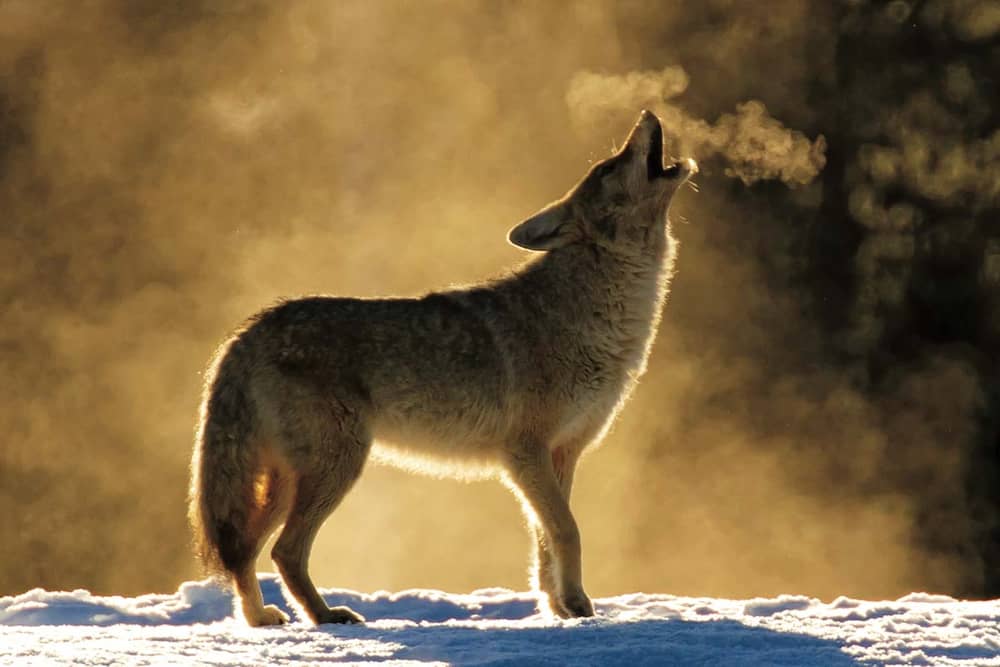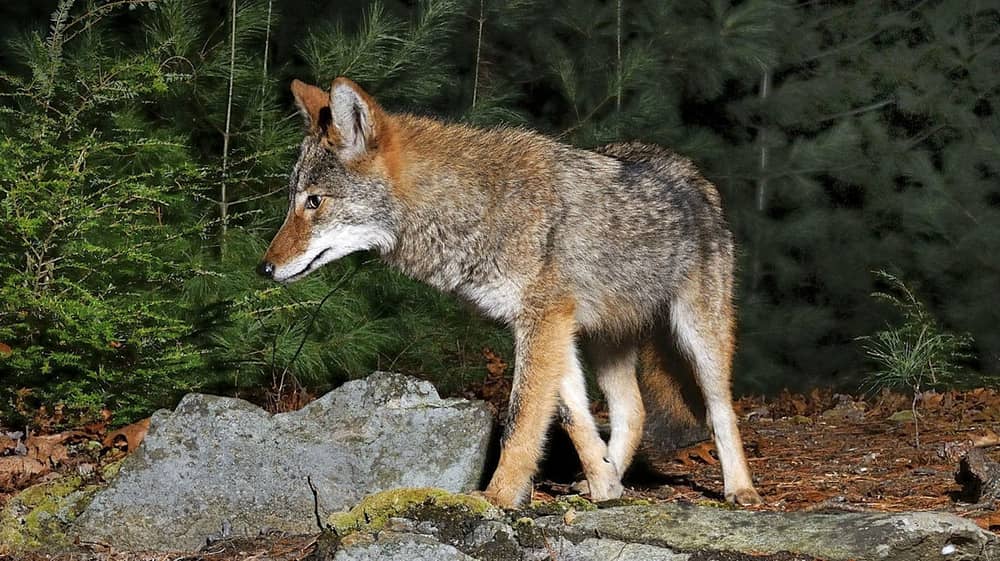Do coyotes hunt in the daytime?
Nowadays, coyotes are snooping into neighborhoods more frequently in quest of food. So it’s very common to see coyotes emerge during the day.
Their behavior varies according to their habitat. Coyotes can hunt during the daytime even though they are typically nocturnal animals. Food supply, habitat pressure, and human activity can all have an impact on this odd behavior.
Because wolves and mountain lions compete with coyotes for prey, they must modify their hunting strategies. They may also be more active during the daytime since urbanization affects their natural habitats.
In addition, coyotes may be enticed to hunt throughout the day by the quantity of prey species. This article will examine if coyotes hunt throughout the day.
Table of Contents
Do Coyotes Hunt In The Daytime?

Coyotes are typically nocturnal predators and are renowned for their adaptability and versatility. They can, however, and hunt during the day. In search of food, coyotes are prowling into neighborhoods more regularly. Therefore, seeing coyotes emerge throughout the day is fairly typical.
Availability Of Food
The availability of food is one of the main factors influencing coyote hunting habits. Because they are opportunistic hunters, coyotes change their hunting tactics according to the availability of prey. In broad areas, they have been seen pursuing rodents. Additionally, coyotes hunt for rabbits in dense cover and follow ducks near lakes and rivers.
Environmental Factors
Their hunting behavior is influenced by environmental factors as well. To increase their chances of finding food, coyotes may continue their hunting into the daytime throughout the winter. Similar to humans, coyotes may alter their hunting habits in areas with harsh weather or high levels of nighttime human activity. They can avoid potential dangers and disruptions thanks to this.
Predators Competition
Other predators’ competition has an impact on coyote behavior as well. Coyotes may switch to daytime hunting in regions with intense competition for available resources. Coyotes can take use of the available prey without being directly harmed by larger predators by taking advantage of their less active times.
Easy Adaptation
It’s important to keep in mind that coyotes are particularly adaptable in suburban and urban areas. As the number of people increases, coyotes have learned to coexist with us. They might be more accepting of daytime activity in these environments, taking advantage of food sources like small animals or scavenging for trash.
What Time Of Day Are Coyotes Most Active?
The dusk and dawn hours are when coyotes are most active. They are more active and participate in different behaviors like hunting, foraging, and territorial marking during this time.
They are more active at these times of change for a variety of reasons. Coyotes can hunt more successfully around sunset. Because the combination of visibility and concealment that the waning light offers. Additionally, there tends to be a higher concentration of prey species at this time of day since they are becoming more active in preparation for the night.
In a similar manner, coyotes use the dawn’s first light to find probable prey. They coordinate with other members of their pack and draw boundaries around their area. Early morning temps are cooler, which makes for good hunting circumstances.
Coyotes may stay active during the day in places with little human disturbance if there are plenty of food sources available. Because there are artificial lights, people moving around, and food supplies like trash or small animals nearby.
Where Do Coyotes Go During The Day?

Coyotes often look for protected spots during the day to rest and conceal. Depending on the available habitat and their surroundings, they may select a variety of specialized spots. Coyotes frequently visit the following locations during the day:
Dens
Coyotes frequently have subterranean dens, which can be found in holes in logs, abandoned buildings, or even burrows. For resting and raising their young, these dens offer a safe haven.
Thick Vegetation
During the day, coyotes might hide in regions with lots of foliage, like thickets, bushes, or wooded areas. These locations offer cover from predators, concealment, and defense from severe weather.
Urban And Suburban Environments
Coyotes may take refuge in parks or even the crevices of residential areas in locations where humans predominate. They might hide out in brush heaps, under decks, or on the periphery of urban parks.
Rural Landscapes
In rural locations, coyotes may hide out in long grasses, fields, or forests. They may also find sanctuary in uninhabited buildings or natural features like caverns or rock formations.
Open Spaces
Even though they frequently prefer cover, coyotes will occasionally rest in open spaces with adequate visibility, especially if they feel somewhat secure. They would be able to keep an eye out for potential predators in fields, meadows, or hilltops.
It’s crucial to remember that coyotes can change their behavior and are quite flexible. Depending on elements including the availability of food, the distance to water sources, and the abundance of prey, they may select various places. Coyotes are adept at locating isolated regions, which helps them save energy and minimize avoidable dangers.
Will A Coyote Attack A Human?
Human-coyote attacks are incredibly uncommon. Coyotes are often cautious, evasive animals who prefer to stay away from humans. They often have a basic fear of people and will hide if approached or discovered.
However, there are several uncommon situations that might force an animal to act threateningly against humans. These occurrences are rare and frequently linked to particular elements like acculturation to humans, food conditioning, or the defense of their young.
It is essential to adhere to the following general recommendations to reduce the possibility of having unpleasant contacts with coyotes:
- Never provide food to coyotes or leave food out for them to find. Because it may result in dependence on food that is provided by people.
- To keep coyotes out of residential areas, put pet food indoors and secure garbage cans.
- When outdoors, keep small pets under close supervision and on leashes, especially around dawn and twilight when coyotes are most active.
- If you come across a coyote, stay at a safe distance and scare it away by making loud noises or waving your arms. Coyotes are typically more cautious around people and will hide if they sense a threat.
- It is crucial to firmly and assertively scare away any approaching coyotes by shouting, clapping, or utilizing other noisemakers.
- You should get help from your local wildlife authority or animal control organizations if coyotes are a danger to the public’s safety.
Final Thoughts
Coyotes may continue their hunting efforts during the day. Their hunting habits are influenced by the availability of food, the surrounding habitat, and competition from other predators. Understanding the conditions that cause coyotes to hunt during the daytime offers important insights into their adaptability and survival techniques. In general, they are wary of people, and coyote attacks on people are incredibly uncommon. We can cohabit with these resourceful predators by respecting their natural behavior and taking the necessary safety measures.

